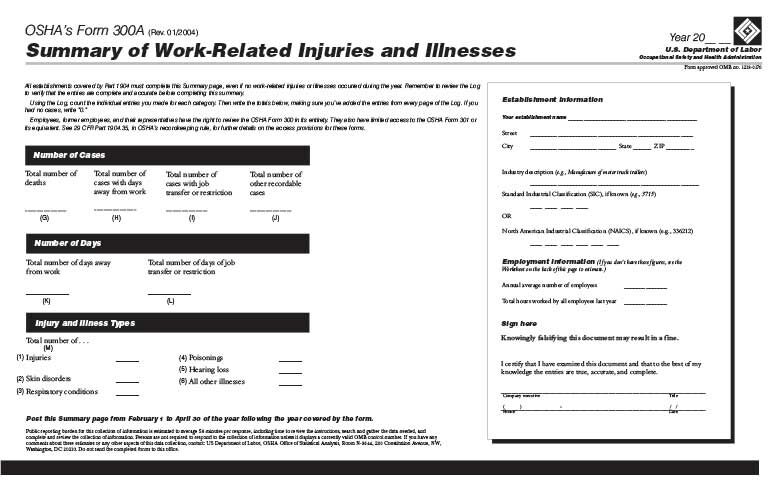New OSHA enforcement program targets Form 300A scofflaws

Washington — OSHA will begin identifying and citing workplaces that haven’t complied with the agency’s requirement to submit Form 300A – an annual summary of worker injury and illness data, under a newly adopted enforcement program.
Each year, OSHA requires establishments with 250-plus employees and those with 20-249 employees in certain high-hazard industries to submit Form 300A through its Injury Tracking Application.
With help from its area offices, OSHA intends to find establishments that haven’t followed the requirement by matching “newly opened inspections against a list of potential non-responders.” The program, set to begin this month, is based on recommendations from the Government Accountability Office.
“If the area office determines that the establishment on the list is the same establishment where the inspection was opened, OSHA will issue citations for failure to submit OSHA Form 300A Summary data,” an April 5 press release states.
The program also will target non-responders at “a corporatewide level” for the nation’s largest employers.
“OSHA believes that it is vital for the public to have access to illness and injury information that employers provide in their annual submissions,” OSHA administrator Doug Parker said in the release. “We are committed to enforcing this important requirement and will continue to look for strategies to reach full compliance.”
OSHA says it will release ITA data “as part of its electronic recordkeeping requirements for certain employers.” As of last month, nearly 300,000 establishments had submitted their information from Form 300A.
“Public access to injury and illness data for industries, companies and establishments allows employers, workers, potential employees, and others to better understand workplace safety and health outcomes at an employer or industry, allowing them to make valuable insights and informed decisions,” the release states. “Employers of all sizes can use this data to benchmark with others in their industry or compare results across their operations. This accessibility will help identify and mitigate workplace hazards, and ultimately result in the reduction of occupational injuries and illnesses.”
Post a comment to this article
Safety+Health welcomes comments that promote respectful dialogue. Please stay on topic. Comments that contain personal attacks, profanity or abusive language – or those aggressively promoting products or services – will be removed. We reserve the right to determine which comments violate our comment policy. (Anonymous comments are welcome; merely skip the “name” field in the comment box. An email address is required but will not be included with your comment.)

